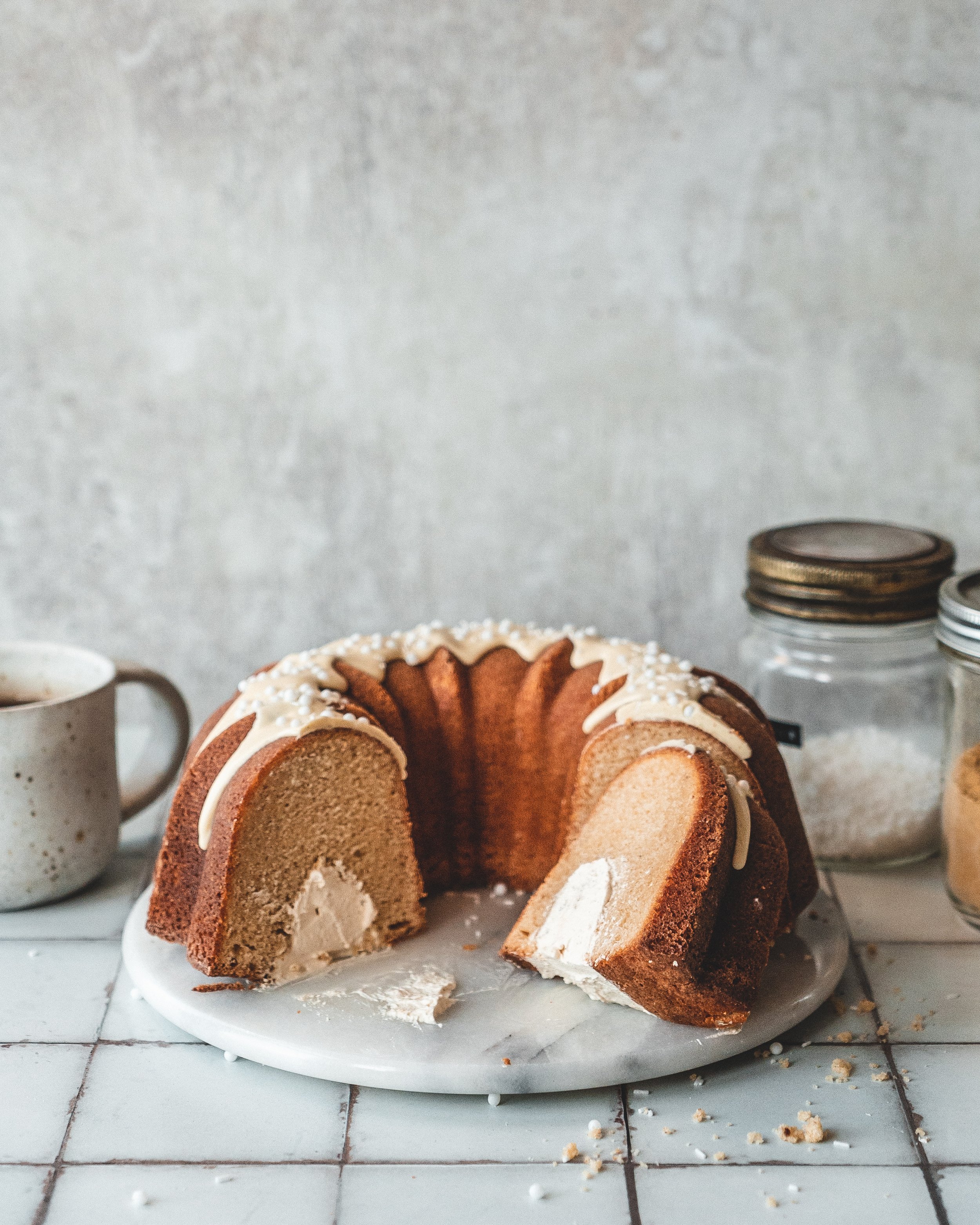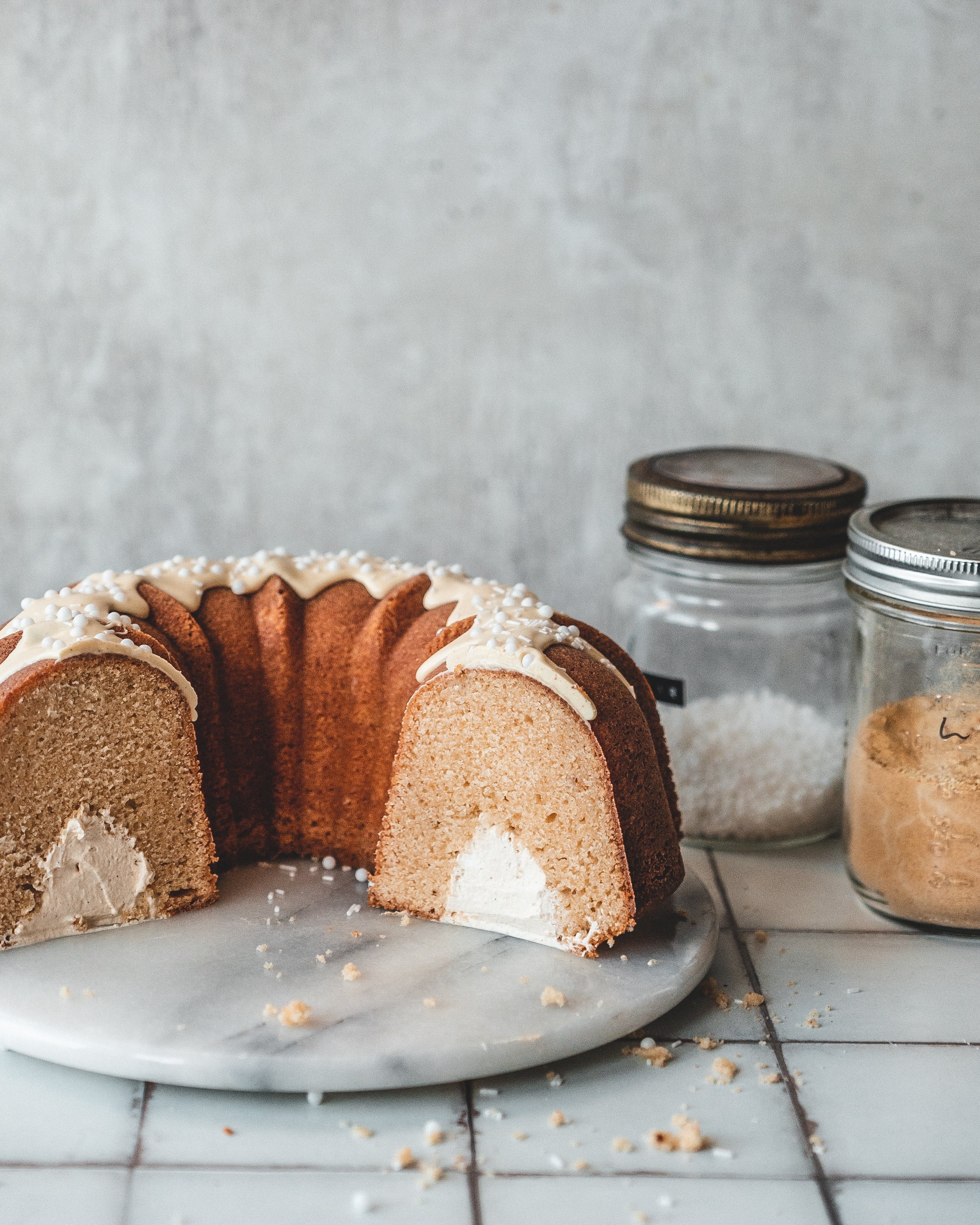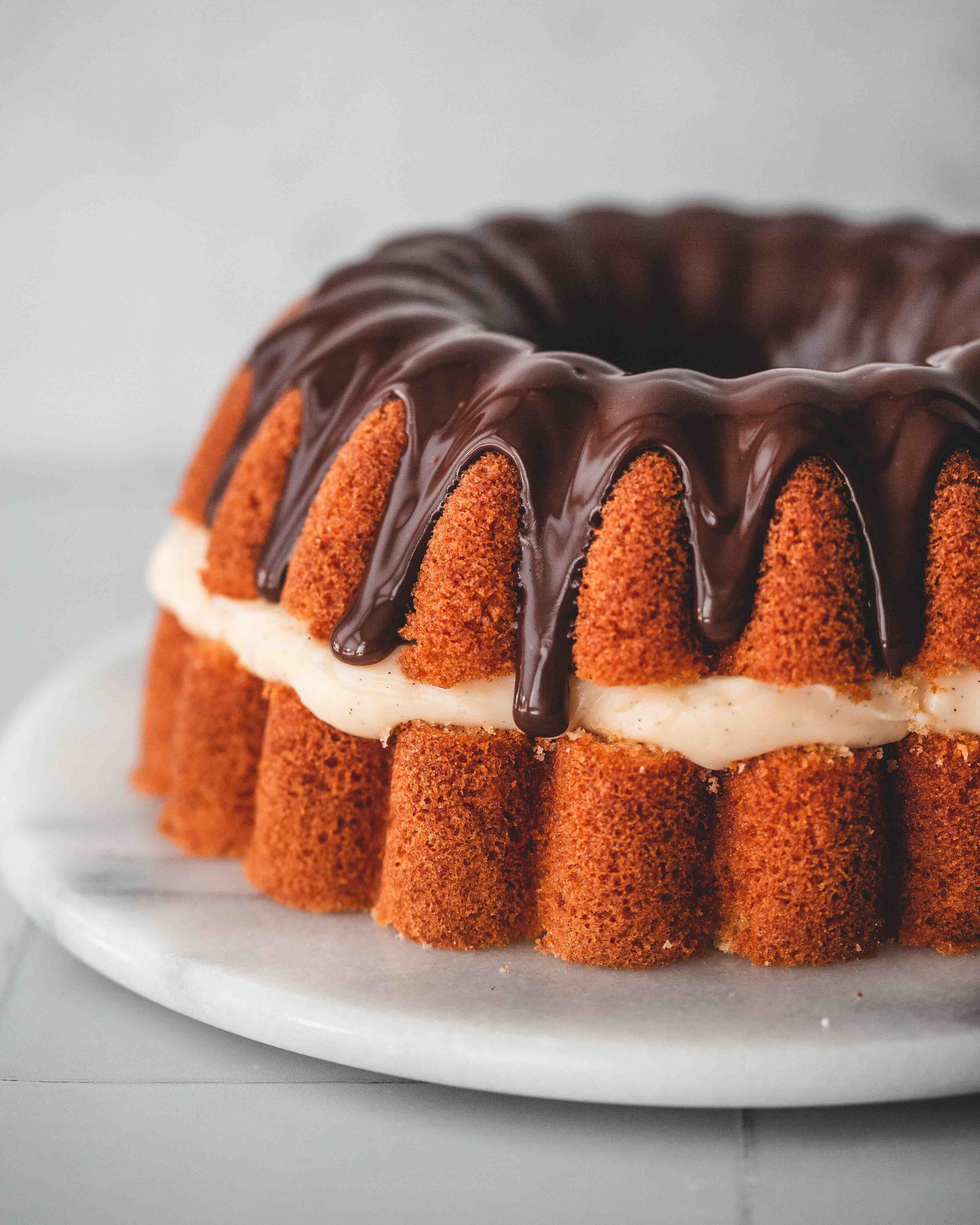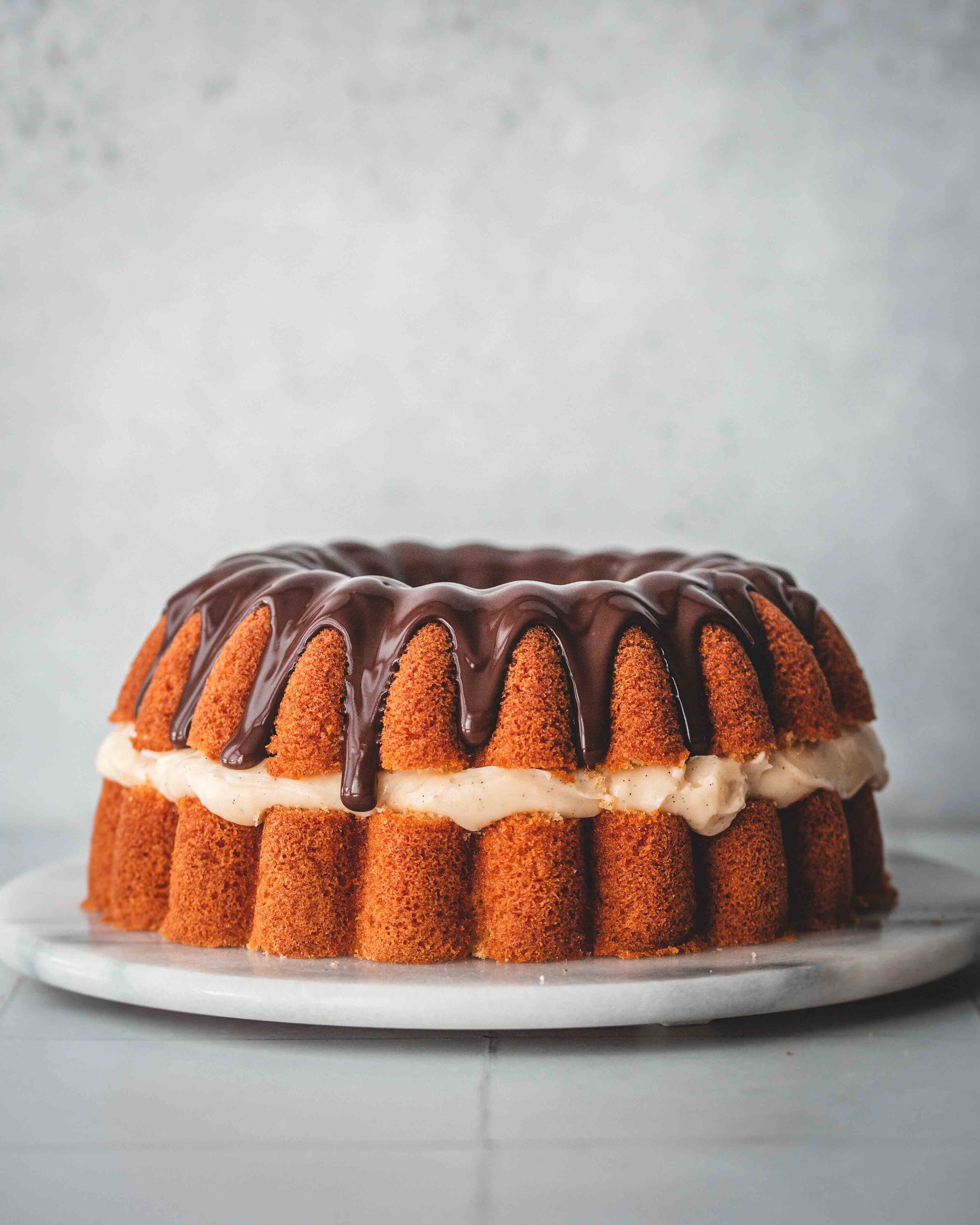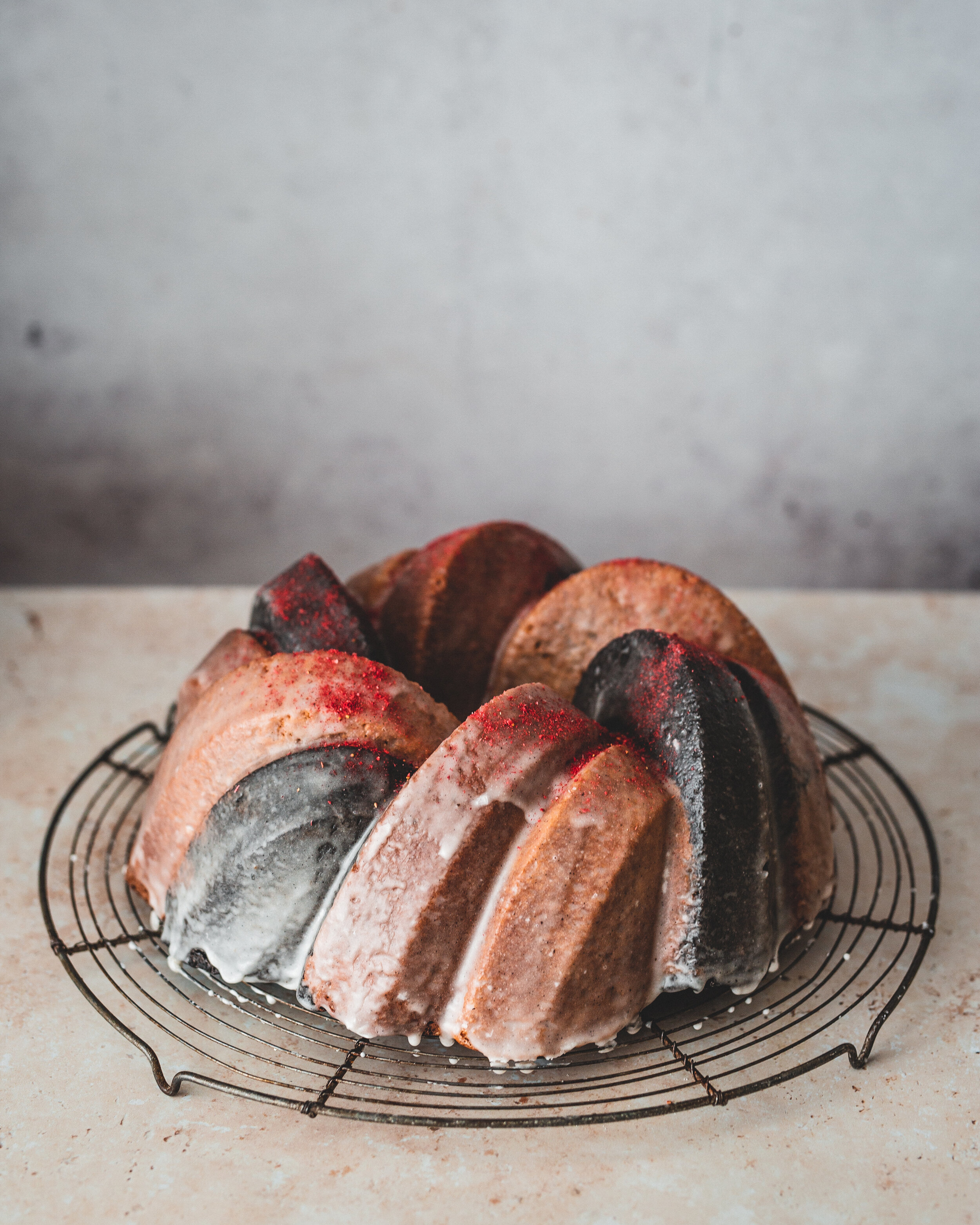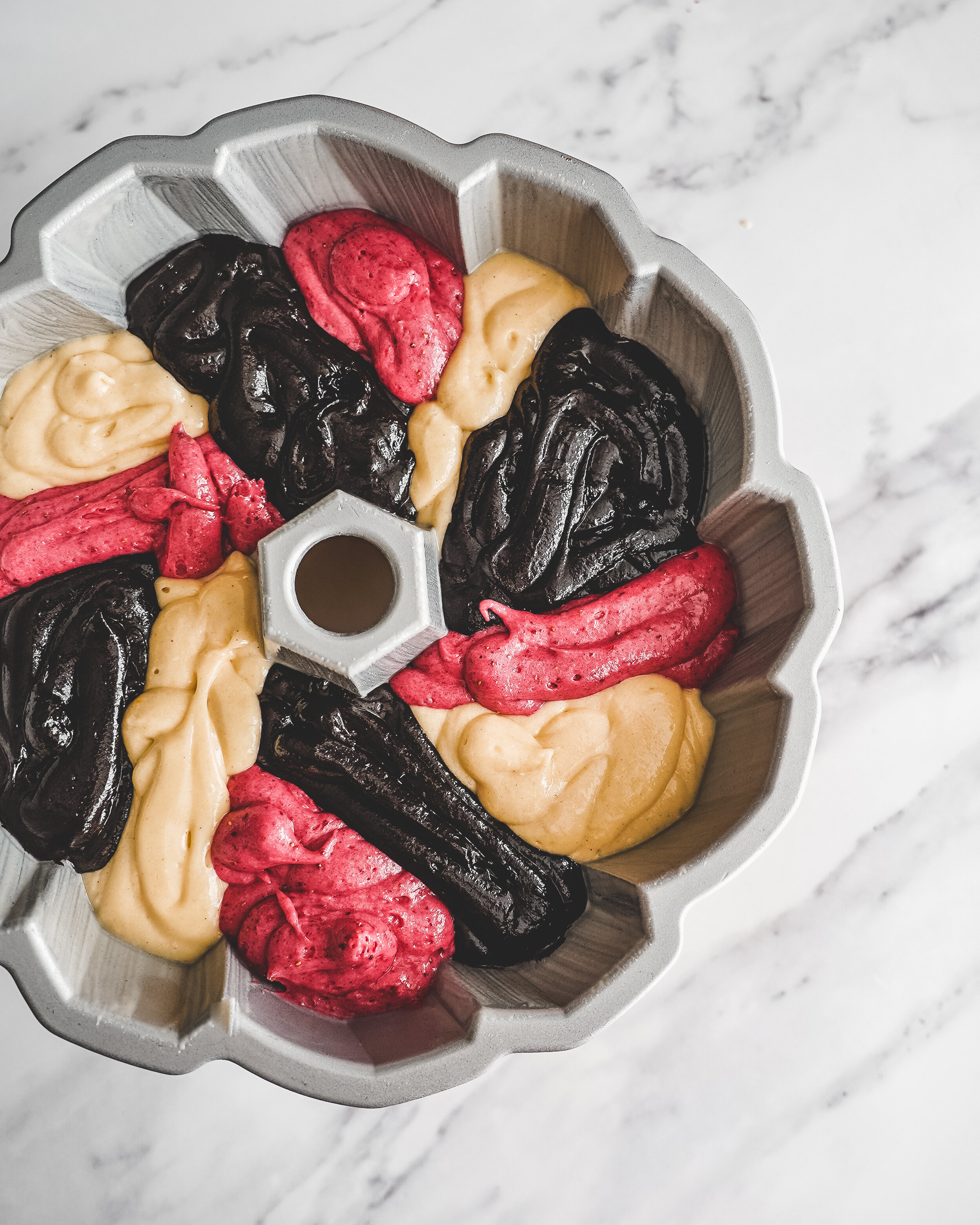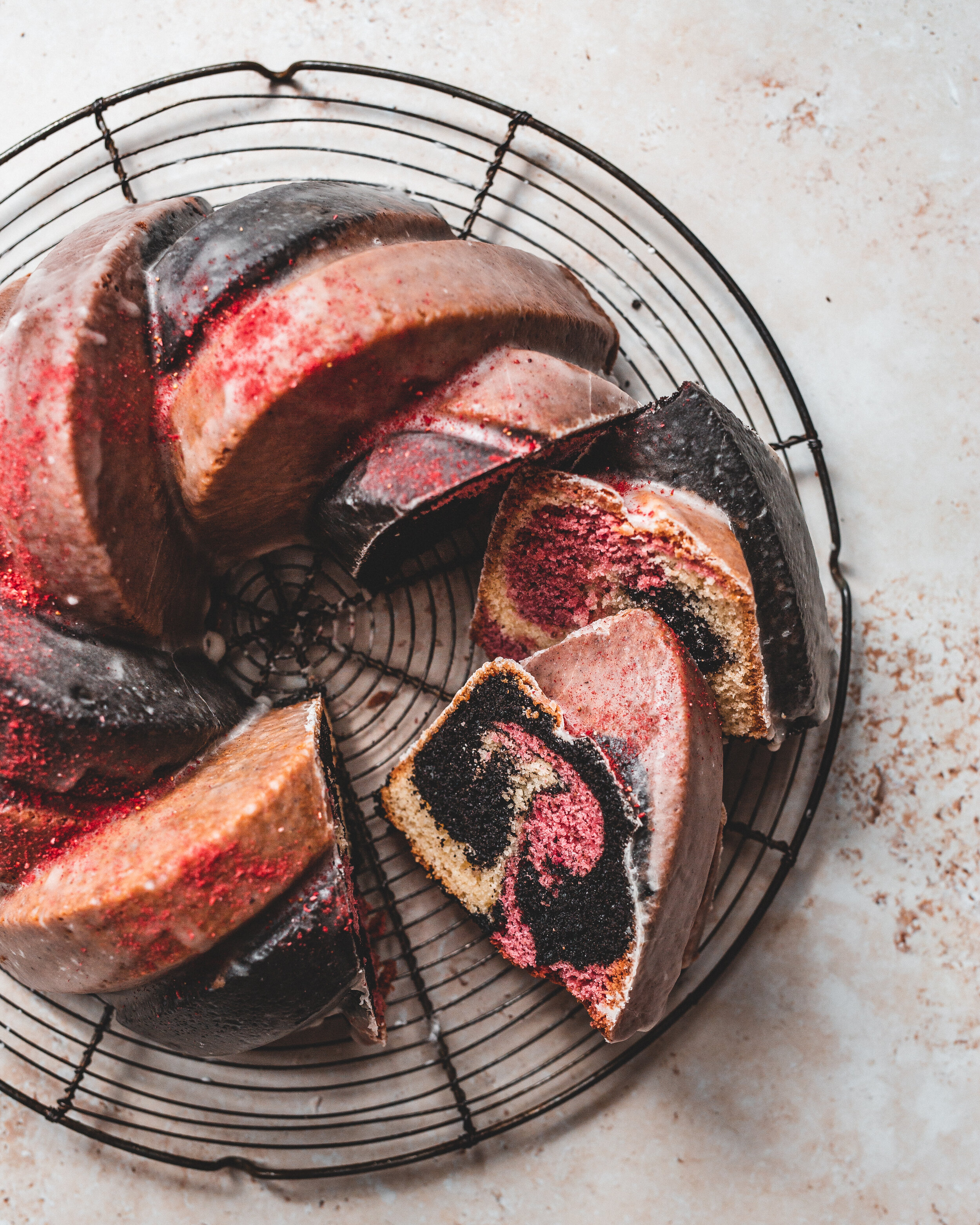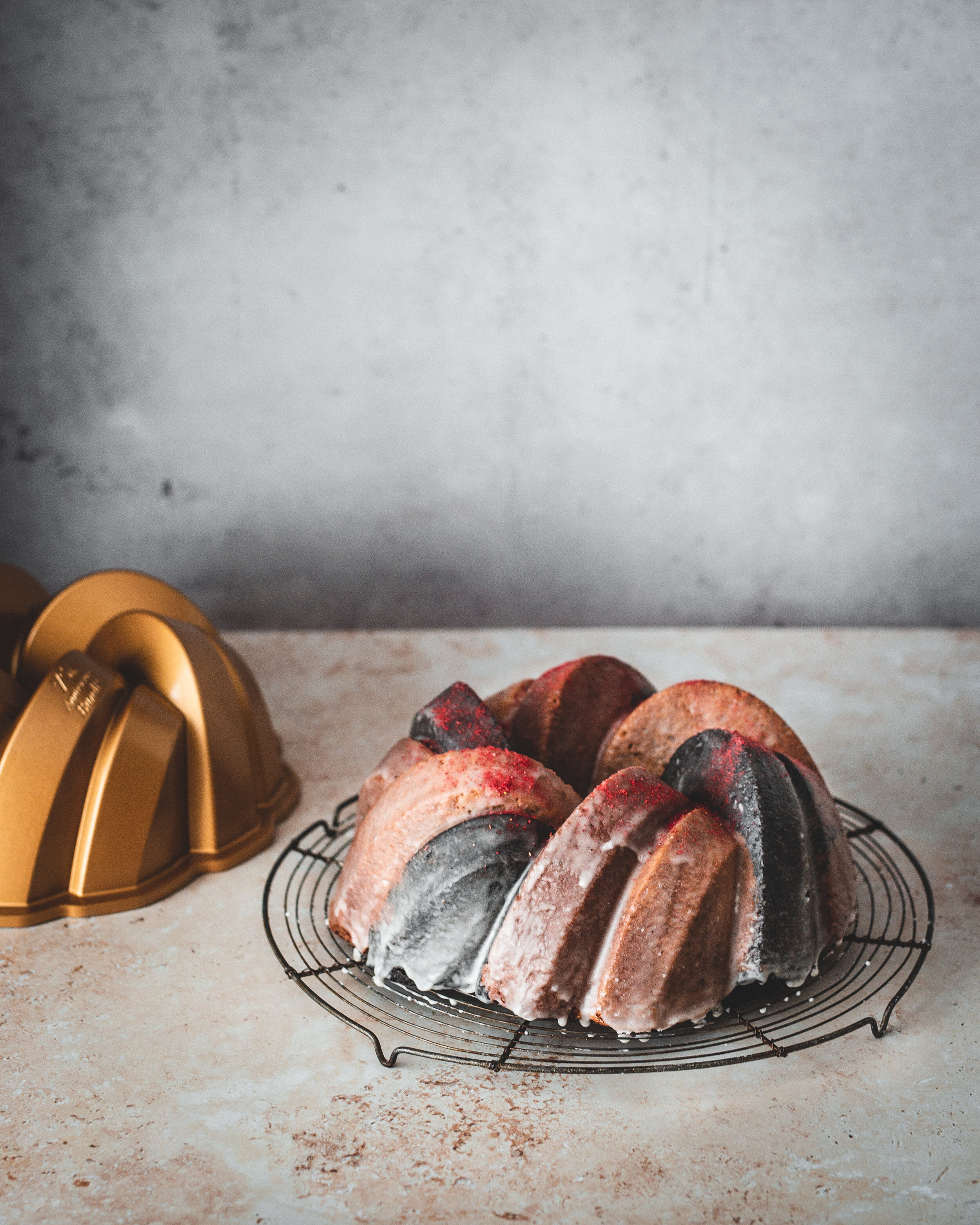This post is sponsored by Wilfa
Every year I like to create a special cake for those of you who don’t love the traditional fruit cake, who despise all things dried fruit. This years cake is, I think, something rather extra special and I think you’re going to love it! I happen to love eggnog, be it the traditional version made with eggs, dairy and rum, or an apple cider version I have been making for the past few years, or even the vegan version I came up with this year. What I am saying is that If you’re making eggnog, I’ll happily take a glass or two. This year, I have taken those classic flavours and turned them into a truly fabulous bundt cake. The cake itself is a relatively classic pound cake, rich and buttery and spiked with lots of nutmeg and a good glug of rum. The cake also has a surprise up its sleeve; when whole it will resemble a very simple pound cake with a little white chocolate glaze, but when sliced the secret is revealed. A little bit like the classic ‘tunnel o fudge’ bundt cake, this recipe has a hidden layer of eggnog whipped cream, made with rum, nutmeg and vanilla. The cake has all the warming toasty flavours of eggnog with the same creamy cosiness you’d expect with the drink.
You’ll see in the recipe I suggest using a little toasted milk powder in both the cake itself and in the whipped cream filling. If you saw my video guide on how to make this magical powder you know it has the same flavour profile as browned butter and adding small amounts to these elements really acts as a wonderful flavour enhancer. I jokingly refer to it as the MSG of baking but its probably pretty accurate, it’s like a secret baking seasoning. It adds a gentle toasted, almost caramel like, flavour and whilst you may not be able to detect it as a distinct flavour it really adds depth and character to the recipe.
To make the cake I used my Wilfa Probaker, the amazing stand mixer I introduced to you last month. After that first post one of the main questions I received was, can it make more than bread (something it does better than any other domestic mixer I have ever tried), and the answer is of absolutely, yes! The Probaker is a multifunctional mixer, with attachments for whisking, for kneading and for beating. The other question I received multiple times was, is the mixer only good for big batches and the answer is no, this can be used as a regular domestic mixer, for single batches of cakes and cookies as well as making big batches, it is designed to work just a well making small batches as it is making big batches, its the best of both worlds. This cake was made with the flexible rubber ‘flexiVISP’ beater which scrapes both the sides and base of the mixer as it beats your ingredients together, which means it is more efficient and the bowl needs scraping down much less frequently than with a traditional metal beater. The other thing that I love this mixer for, when making cakes, is that you can have the mixer running and add dry goods into the bowl without them flying out of the bowl in a giant cloud of flour and icing sugar, a feature of the mixer that makes me very happy!
To get 20% off Wilfa products make sure to use the code THEBOYWHOBAKES at checkout.
Eggnog Bundt
Serves 12-15
340g unsalted butter, room temperature
450g caster sugar
3 tbsp toasted milk powder (optional)
2 tsp vanilla bean paste
5 large eggs, room temperature
1/2 a nutmeg, freshly grated
375g plain flour
1/2 tsp salt
3 tsp baking powder
200ml sour cream, room temperature
50ml dark rum
Filling
250ml double cream
1 tbsp light brown sugar
25ml dark rum
1 tsp vanilla bean paste
1 tbsp toasted milk powder (optional)
1/4 tsp freshly grated nutmeg
To Decorate
100g white chocolate, melted and cooled slightly
To make the Bundt preheat the oven to 180C (160C fan). Lightly grease a 12-cup capacity Bundt pan (I used this one) with softened butter and dust with flour, tapping out any excess.
Add the butter and sugar to the bowl of the Wilfa Probaker with the flexivisp (silicon edge beater) attached. On medium/high speed cream together the butter and sugar for 5 minutes or until light and fluffy. Add the milk powder and vanilla and beat briefly to combine. Add the eggs one at a time, with the mixer running on medium speed. Once each egg is fully mixed into the butter mixture, add another. Meanwhile whisk together the flour, baking powder and salt. Grate the nutmeg into the mixer bowl and then add the flour mixture in three additions, alternating with the liquid ingredients (starting and finishing with flour). When you’re adding the flour mixture keep the mixing to a minimum, you want to mix just until evenly mixed but avoiding mixing for too long and making a tough cake.
Scrape the finished batter into the prepared Bundt pan and level out. Bake in the preheated oven for 55 minutes or until a skewer inserted into the cake comes out clean. Place the Bundt pan on a wire rack to cool for 10 minutes before inverting and turning out the cake. Allow to cool fully before adding the filling; when making bundt I often make this in the evening and leave overnight before assembling.
For the filling add all of the ingredients to a large bowl and whisk until medium/stuff peaks form. Place the cake back into the cleaned Bundt pan and use a pairing knife to score a channel in the base of the cake and then use a spoon to scoop out the channel making a tunnel in the base of the cake. Add the filling to this channel and smooth out so the filling sits flush with the base of the cake. Carefully turn the cake out onto a serving plate or cake stand.
To decorate pour over the melted and cooled white chocolate and finish with a few festive sprinkles. The white chocolate needs to have cooled but still be pourable, that way the chocolate doesn't just run immediately off the cake.
Once the filled the cake needs serving on the same day or refrigerating for a day or two. Unfilled the cake would keep for 3-4 days.
